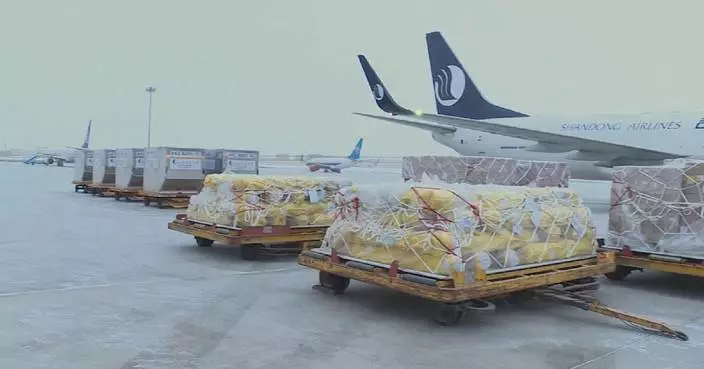Senior executives from international broadcasting associations and mainstream media professionals shared their insights on how to boost the influence of the Global South during the 12th Global Video Media Forum (VMF) held in east China's Fujian Province on Tuesday and Wednesday.
The two-day VMF event gathered around 200 representatives from mainstream media outlets and international organizations from more than 60 countries and regions in the coastal city of Quanzhou, known as an historic trading port and UNESCO World Heritage Site.
The forum saw the release of the Joint Initiative for Media Dialogue and Cooperation of the Global South, which aims to build a Global South narrative system and amplify the voices of its media, and foster mutual learning and exchanges to drive the shared prosperity of Global South civilizations.
At a special dialogue session on Tuesday afternoon, media leaders from various countries and organizations put forward their perspectives on how to better tell the stories of the Global South.
Ahmed Nadeem, Secretary-General of the Asia-Pacific Broadcasting Union, said that Global South media outlets should develop creative ways of delivering content so as to showcase their diverse cultures.
Juan Carlos Isaza, Managing Director of the Latin American Information Alliance, said his association stands ready to expand cooperation and share its news resources with more global partners.
Also attending was Ian Phillips, Director of the News and Media Division under the United Nations Department of Global Communications, who said the media need to invest more in the Global South, and called for a "rebalancing" in the world, urging developed countries to provide more support to the Global South on key issues like climate.
Neville Choi, a representative of the Pacific Islands News Association, pointed to the emergence of new technologies such as artificial intelligence but said countries in the Global South should always look to promote their cultural heritage.
Meanwhile, Gregoire Ndjaka, CEO of the African Union of Broadcasting, said the media should play a bigger role in filling the knowledge gap between people from different backgrounds.
Abdelrahim Suleiman, Director General of the Arab States Broadcasting Union, said greater media cooperation across the Global South is an opportunity to connect the Arab world and bring all developing countries together for common development.
Hosted by CCTV Video News Agency (CCTV+) under the theme "Intelligence Without Frontiers, Vision Beyond The Horizon -- Media's Role in Communication and Cultural Exchange," the forum also saw in-depth discussions on the application and governance of artificial intelligence technologies in the media sector.
Launched by CCTV+ in 2011, the VMF has grown into a premier platform for media professionals from around the world to discuss the latest trends in video content communication and innovation, and aims to foster greater interaction and collaboration between domestic and international media.

Int'l media leaders share insights on boosting influence of Global South

Int'l media leaders share insights on boosting influence of Global South









